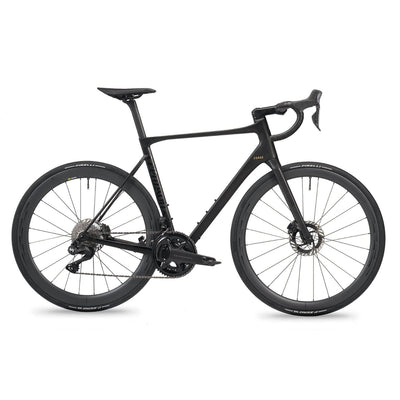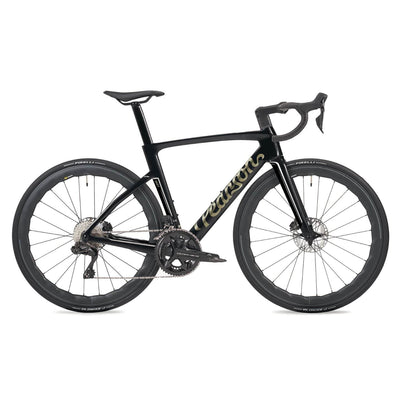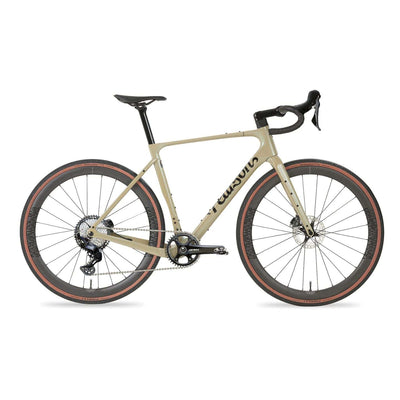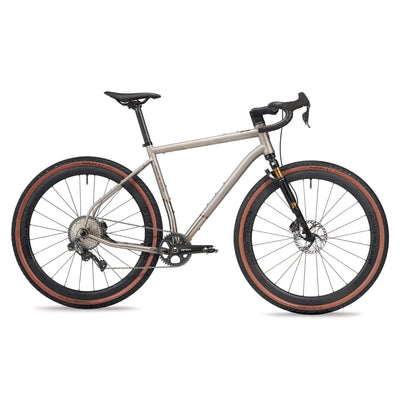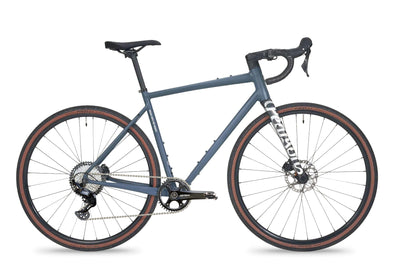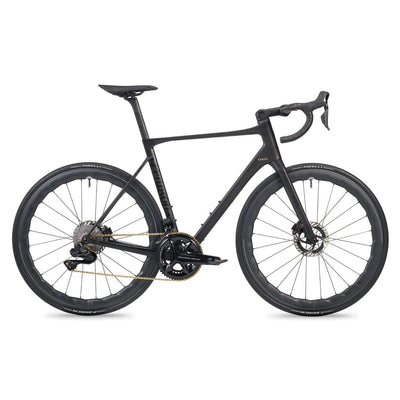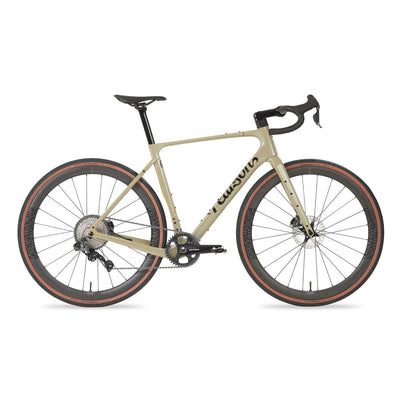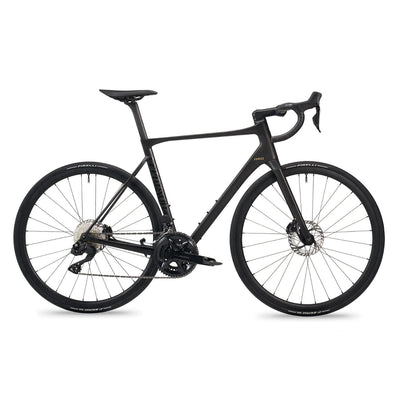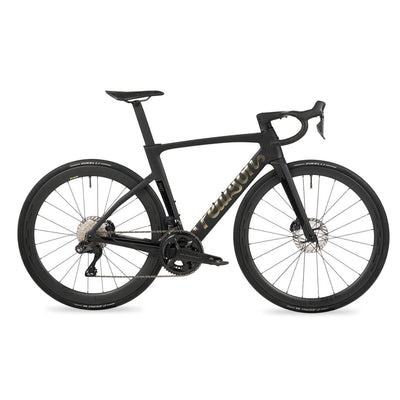TIME FOR LES FEMMES. Women's pro cycling is finally getting the profile it deserves
The inaugural Tour de France Femmes marks another milestone for women’s cycling. We take a look at the state of women’s pro road cycling and where it’s heading.
This year’s launch of the Tour de France Femmes has generated huge interest amongst cyclists, the media and brands and finally offers a premiere women’s stage race to match the men’s Tour de France.
Although this year’s eight stages and 1000km route aren’t the match for the men’s route in distance, the women’s race has included gravel sections, there’s a big climbing day in the Vosges and the same climb to La Super Planche des Belle Filles as a finale that the men’s race tackled on its Stage 7. The race is being contested by the riders with the same competitiveness as the men’s race and generating the same drama and excitement too.

But the Tour de France Femmes is just the latest race and the icing on the cake for what was already an increasingly high profile Women’s WorldTour.
More races
A major driver of the increased status of women’s cycling is the increasing number of top tier races that now have a women’s as well as a men’s version.
The Tour de France Femmes is something of a laggard in this respect. Despite being run by a woman, Marie-Odile Amaury, ASO, the owner of the Tour de France, was slow to dip its toe into women’s stage racing.

Although there had been six editions of a women’s Tour de France between 1984 and 1989, this race folded due to its unprofitability, mainly due to lack of media coverage and it being run concurrently with the men’s Tour de France.
In 2014 ASO launched La Course by Le Tour De France, initially as a one day circuit race on the Champs-Élysées as a precursor to the final day of the men’s race. Subsequent editions were mostly one day races in Paris or in other, hillier parts of France. It’s only this year that ASO has relaunched a full multi-day women’s Tour de France.

In fairness to ASO, it has for a while had a women’s version of several of the one day races it stages, including since 2017 Liège–Bastogne–Liège Femmes and two editions of Paris-Roubaix Femmes. Along with the women’s Tour of Flanders, run since 2016, that means that three of the five men’s cycling Monuments now have a women’s equivalent. There are rumours of a women’s Giro di Lombardia and a Milan-San Remo women’s race is also mooted for 2023, which would make up the missing two.
ASO has also organised the Ceratizit Challenge in Spain, which has progressively expanded from a one day race to five days this year and six planned for 2023.

Prior to this year, arguably the top women’s stage race was the Giro d’Italia Donne. Its staging overlaps with the men’s Tour de France, resulting in it being rather eclipsed, but its ten stages in 2022 covered over 1000km and attracted the top tier Women’s WorldTour teams, with Annemiek van Vleuten of Movistar winning this year’s race.
In the UK we have the Women’s Tour which has been run since 2014 and since 2019 has been raced over six stages.

More coverage and sponsorship
The launch of the Tour de France Femmes - or to give it its full title Le Tour de France Femmes avec Zwift has drawn support from other major cycling brands like Strava as well as Zwift.
It’s also generated a lot of interest from the media and from other brands, including those that already support women’s cycling as team sponsors - much of it with an undertone of “it’s about time”.
Although, disappointingly, there has been no free-to-air coverage in the UK, the race has been widely covered internationally and in the UK can be watched live and on-demand on the subscription services GCN+, Eurosport and Discovery+.

These channels also cover a wide range of other women’s cycling events throughout the season, including the Giro d’Italia Donne and the Women’s Tour, which has also been shown free-to-air on ITV4.
That increased media coverage and increased sponsorship of women’s cycling are key to its commercial success. The UCI demands live coverage of top tier events and its absence was one of the factors in the demotion of the Giro d’Italia Donne to 2.Pro level in 2021.
It’s not just the races. With the increasing media exposure the Women’s WorldTour teams are attracting more sponsorship.

A lot of the teams have names that are familiar to followers of men’s racing, with many sponsors of men’s teams also sponsoring women’s teams. Marianne Vos wore the yellow jersey of the Tour de France Femmes for most of the race and came away with the green jersey, making it a year of spectacular victories for Lotto-Jumbo.
Below the 14 Women’s WorldTour teams there’s a thriving number of Women’s Continental teams hoping to step up to the top rank, with the top teams receiving wildcard invitations to Women’s WorldTour races, which ups their profile.
Social media has also fed an increased interest in women’s racing. It’s allowed teams and race organisers to stream highlights of races and team news, bypassing the mainstream media. That’s shown that there’s a growing interest in following women’s racing and in turn caused the mainstream media to sit up and take notice, leading it to increase its coverage.

Better conditions
With increased media and sponsorship interest, more money is flowing into women’s cycling, which has resulted in better conditions for women racers.
In the ITV4 Rest Day 2 Highlights Show (at 26:00 here), Lizzie Deignan and Ned Boulting discussed the developing landscape of women’s cycling. Deignan, pregnant with her second child, noted that her initial pro contract in 2009 paid her 200 Euros a month.
Nowadays, women pro cyclists can expect to be paid at least the minimum wage and to be paid maternity leave if they decide to have a child. Deignan has proved that being a mother doesn’t stop you from competing at the highest level with her win of the inaugural Paris-Roubaix Femmes in 2021.

The organisation of women’s races is getting more professional as well. In her ITV4 interview, Deignan noted how at the only two day edition of La Course in 2017 the teams were left to make their own way from the first stage in the Alps to the second in Marseilles the next day, resulting in a nine hour transfer. The individual pursuit format of the race in Marseilles was also criticised.
One of the other reasons that the Giro d’Italia Donne was downgraded, apart from lack of live television coverage, was due to poor organisation, with route and timing changes and concerns over safety and security. RCS, the organiser of the men’s Giro is said to be considering taking over the women’s race, which should bring more organisational expertise to the race.
Still barriers
Despite the upward trajectory of women’s racing, there are still barriers.
With a minimum team size of 12, as Deignan points out, there’s far less opportunity for women riders to specialise than there is for men. The women’s Movistar team has 14 riders, for instance, the men’s 29.

Scheduling training blocks to peak for specific races is a fundamental of performance management in modern cycling. Most races have team sizes of six women as against eight for men, so there’s less opportunity for women to periodise training and target races that match their strengths than there is for male riders. Women riders have to stay competitive throughout the season and there’s less leeway in the teams to allow for injuries and that’s only going to be exacerbated as more top tier races enter the calendar.
Cycling is one of the sports furthest from pay parity between male and female competitors too. In contrast to tennis, where men and women are paid the same amount of prize money in the major Grand Slam tournaments, there’s a significant gap both in salary and prize money in cycling at WorldTour level. Many Women’s Continental riders are not paid at all.

In 2021 Anna van der Breggen was paid 600 per cent less prize money for winning Omloop Het Nieuwsblad than men's winner Davide Ballerini, despite figures from Holland showing that the women’s race attracting double the viewership in that country. Fans have crowdfunded extra prize money for the women’s Strade Bianche. The Tour de France Femmes paid a third the prize money of the men's race.
There are exceptions though. All UCI events like the World Championships have equal prize money and the Women’s Tour in the UK has the same size prize pot as the men’s Tour of Britain, for example.
So, although it’s still a somewhat checkered landscape, women’s road racing is increasing its profile in the cycling world. There are more races, there’s more media attention and conditions for the riders are improving. It’s a trend that the Tour de France Femmes will serve to accelerate. With more money flowing into the women’s sport too, its trajectory can only be upwards.

